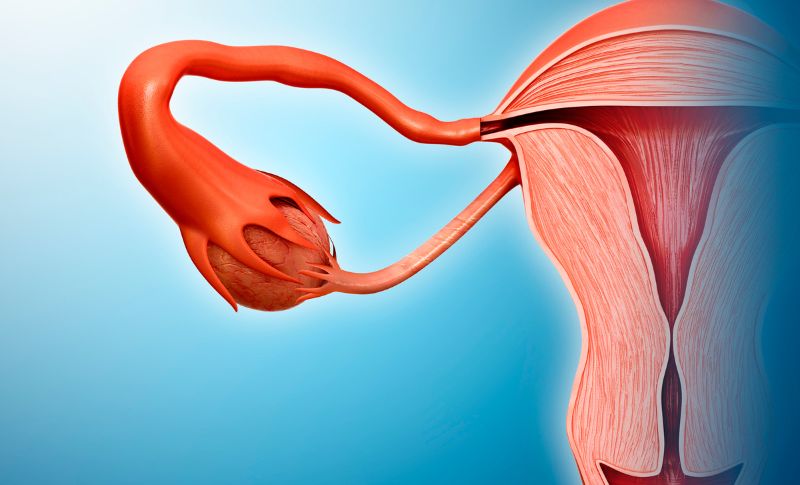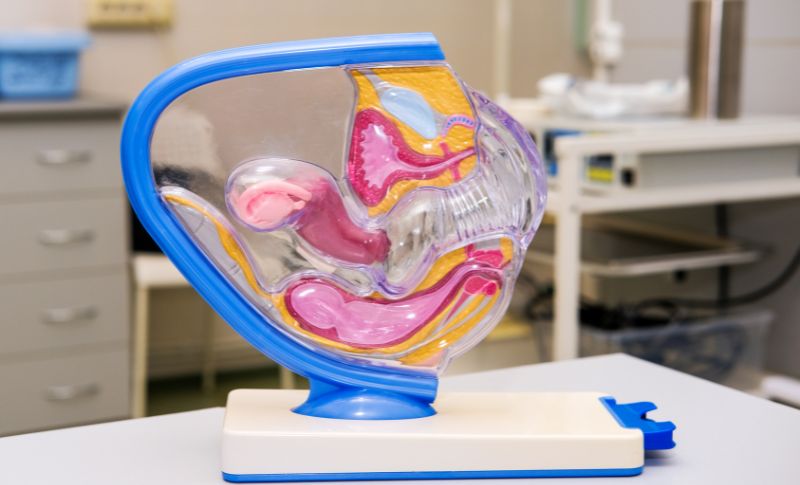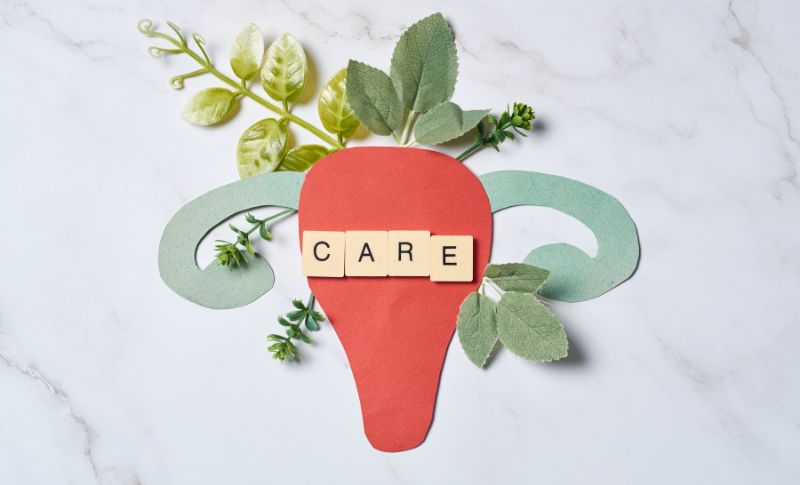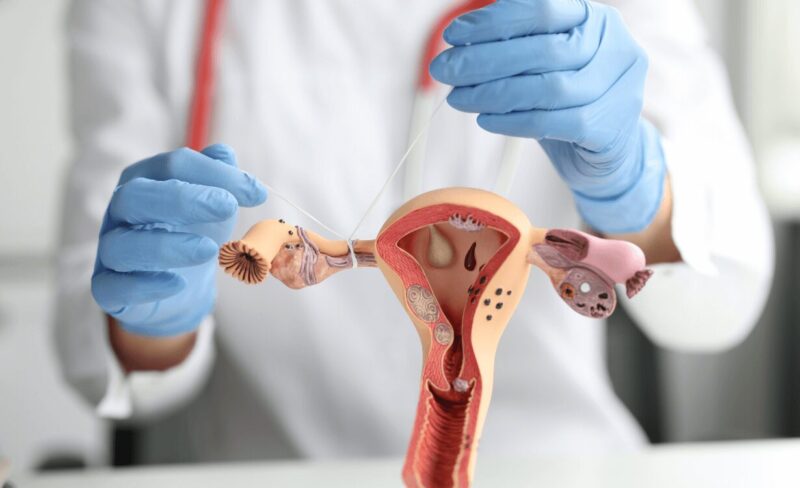Life doesn’t always play out like a fairy tale. But when it comes to the dream of having a baby, medical science has made great strides in turning the impossible into reality. If you have fallopian tube issues that make natural conception a challenge, this article is for you.
In it, we’ll talk about the alternatives for women who are facing infertility due to damaged or missing fallopian tubes. We aim to make complex medical information digestible and accessible for all. From understanding your anatomy to exploring fertility treatments and surgical options, we have you covered.
Fallopian Tube Functionality Explained
Your fallopian tubes are like the grand highway that an egg takes from the ovaries to the uterus. In simple terms, they’re a vital part of natural conception. Normally, an egg released from the ovary is captured by the fimbriae, tiny finger-like projections at the end of the fallopian tube, and is then propelled down the tube toward the uterus.
What Happens When They Are Absent or Damaged?
When fallopian tubes are blocked, damaged, or missing altogether, the journey of the egg is disrupted. This makes natural conception very difficult, if not impossible, and increases the risk of ectopic pregnancy, where the fertilized egg implants itself outside the uterus.
The Emotional Toll
Infertility due to fallopian tube issues can be emotionally draining. The inability to conceive naturally can cause stress, anxiety, and emotional turbulence for women who are eager to become mothers. It is crucial to understand that you are not alone and that modern medicine offers alternative routes to conception.
Why Fallopian Tubes Might Be Absent or Damaged

Congenital Absence
Some women are born without fallopian tubes, a condition known as congenital absence. While rare, it poses a unique challenge for those wishing to conceive naturally. Understanding the reason behind your infertility is the first step in seeking alternative methods of conception.
Infection or Surgery
Infections like pelvic inflammatory disease (PID), prior surgeries, or ectopic pregnancies can also damage fallopian tubes. In some cases, surgical treatment may be able to restore some functionality, but it’s not a guarantee.
The Role of Lifestyle and Environment
There’s also evidence that lifestyle factors such as smoking and certain environmental toxins may contribute to fallopian tube damage. While the role of these factors is still being studied, it’s important to be aware of possible risks.
Diagnosis and Initial Steps

How Is Fallopian Tube Health Assessed?
Several diagnostic tests can evaluate the state of your fallopian tubes, including hysterosalpingograms (HSG), ultrasounds, and laparoscopy. Consult your healthcare provider to decide which test is most appropriate for your situation.
Moving Forward Post-Diagnosis
Once you know the state of your fallopian tubes, it’s time to consider your options. A fertility specialist can provide tailored advice based on your diagnosis, helping you understand the treatments most likely to result in a successful pregnancy.
Financial and Emotional Preparation
Before diving into treatment options, prepare yourself emotionally and financially. Many treatments can be costly and emotionally taxing. Support from friends, family, and healthcare professionals can make a significant difference during this journey.
Treatment Options

In Vitro Fertilization (IVF)
- What is IVF?: IVF involves retrieving eggs from the ovaries, fertilizing them in a lab, and then implanting the embryo directly into the uterus, bypassing the fallopian tubes.
- Success Rates: IVF has a success rate of about 20-35% per cycle, depending on factors such as age and overall health.
- Cost Considerations: IVF is often costly, ranging from $12,000 to $17,000 per cycle in the United States. Some insurance plans may cover part of the cost.
Surgical Options
For some women, surgery might offer a glimmer of hope. Procedures like tubal ligation reversal and salpingectomy (removal of a portion of the fallopian tube) are sometimes feasible options.
- Tubal Ligation Reversal: For women who have undergone tubal ligation (a form of permanent birth control), reversal surgery might restore some function to the tubes.
- Salpingectomy: If only a portion of the tube is damaged, removing the affected part may improve the chances of natural conception.
Adoption and Surrogacy
While not fertility treatments per se, both adoption and surrogacy are viable paths to parenthood for couples unable to conceive naturally. These options come with their own emotional and financial considerations but can be deeply fulfilling.
Financial and Emotional Considerations

Insurance and Grants
- Check with your insurance provider to see if any of your treatments are covered.
- Explore fertility grants and scholarships that may be available to help offset costs.
Support Networks
Joining support groups or online communities can offer emotional backing and valuable insights from those who have walked the same path. Don’t underestimate the value of emotional support in this challenging journey.
Psychological Help
The process can be emotionally taxing. Consider consulting a mental health professional specializing in fertility issues to help you cope with the emotional aspects of this journey.
Further Resources and Next Steps
Educational Material
Equip yourself with credible information from reputable sources. Books, medical journals, and consultations with healthcare providers can deepen your understanding and guide your decisions.
Researching Fertility Clinics
- Look for clinics specializing in your specific condition.
- Ask for success rates, read reviews, and perhaps schedule consultations with more than one clinic to get a well-rounded view.
Creating a Treatment Timeline
Map out a realistic timeline for your journey, taking into consideration medical procedures, recovery times, and potential setbacks. This will help you and your partner set expectations and manage stress.
Keep the Hope Alive
It’s understandable if, at times, you feel overwhelmed. Infertility is a deeply emotional and often complex issue to navigate. However, with advancing medical technologies and increasing support resources, the dream of becoming a parent is more attainable than ever—even for those who cannot conceive naturally due to fallopian tube issues.
As you go through treatments, consultations, and perhaps even setbacks, don’t lose hope. Keep your ultimate goal in sight and take one step at a time. In the end, the journey, no matter how tough, could lead you to the most rewarding destination: a family of your own.
FAQs
Are there any natural therapies that can improve the function of damaged fallopian tubes?
While there is ongoing research into natural therapies, there is currently no scientific evidence to support the claim that herbal or natural treatments can repair damaged fallopian tubes. It’s crucial to consult with your healthcare provider for diagnosis and treatment options that are tailored to your specific condition.
Can diet or lifestyle changes improve fallopian tube function?
As of now, there’s no conclusive evidence that diet or lifestyle changes can directly improve the function of damaged fallopian tubes. However, a healthy diet and lifestyle can positively impact your overall reproductive health and may improve the outcomes of fertility treatments like IVF.
How do I know if IVF is the right choice for me?
Determining if IVF is the right choice involves multiple factors, such as your age, overall health, and the reason for your infertility. Consult with a fertility specialist who can evaluate your specific situation and recommend the most appropriate treatment options. Sometimes, several diagnostic tests and a thorough medical history are needed to make an informed decision.
Can I carry a baby to term if my fallopian tubes are damaged?
Yes, it is possible to carry a baby to term without functional fallopian tubes. Techniques like IVF bypass the need for the fallopian tubes by implanting the fertilized embryo directly into the uterus.
Is it possible to donate eggs if I have damaged or missing fallopian tubes?
Generally, having damaged or missing fallopian tubes does not affect your ability to donate eggs. Egg retrieval for donation is usually done via ovarian follicular aspiration, a procedure that doesn’t involve the fallopian tubes. However, each egg donation program may have its own specific criteria, so it’s best to consult with the specific program you are interested in.
Do fertility drugs like Clomid work if the fallopian tubes are damaged or missing?
Fertility drugs like Clomid stimulate ovulation, but they don’t resolve issues related to damaged or missing fallopian tubes. These drugs can be effective in cases of ovulation disorders, but they won’t be helpful if the fallopian tubes are the primary issue preventing pregnancy. Therefore, consult with your healthcare provider for tailored advice.
Final Words
Having damaged or missing fallopian tubes doesn’t mean the end of your journey toward motherhood. While the path might be challenging, modern medicine offers a variety of solutions, from IVF to surgical options.
The first step is understanding your condition and seeking appropriate medical guidance. Don’t forget that emotional and financial preparation is crucial in navigating this complex pathway. With the right resources and support, the dream of having a baby could be a reality waiting to unfold for you.

